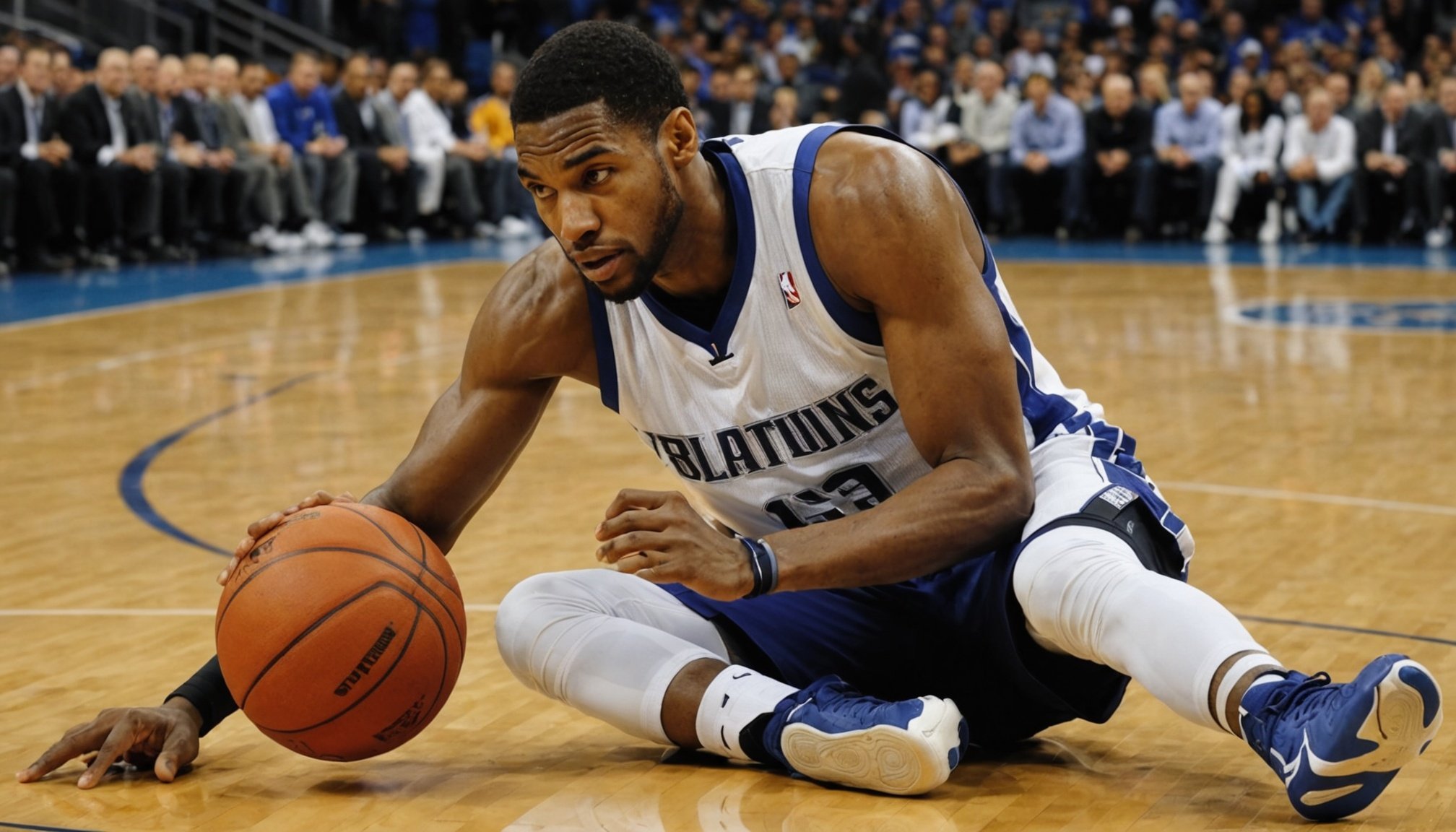In the fast-paced world of basketball, players constantly push their bodies to the limits. Long practices, intense games, and the pressure to perform can lead to significant fatigue. When this fatigue sets in, it can affect not just performance but also an athlete’s overall well-being. Understanding how to recover effectively from these slumps is crucial for maintaining peak performance. In this article, we will explore various strategies that basketball players can adopt to ensure quick recovery from fatigue, enhancing their performance on the court.
Understanding Fatigue in Basketball
Fatigue is a common challenge faced by many athletes, particularly those involved in demanding sports like basketball. It is not just a feeling of tiredness; fatigue can significantly impair physical and mental performance. During games, players run, jump, and engage in high-intensity activities that can lead to physical exhaustion over time.
Also to read : What strategies can teams employ to enhance their defensive capabilities during games?
Research has shown that fatigue can be broken down into two main types: physical and mental. Physical fatigue occurs when the body experiences a depletion of energy resources, often due to prolonged exertion. This can result in a decrease in performance, such as reduced shooting accuracy or slower defensive reactions. On the other hand, mental fatigue may arise from the stresses of games or extended training periods, affecting a player’s focus and decision-making skills.
Understanding the signs of fatigue is essential for players and coaches. Common indicators include decreased motivation, increased irritability, changes in sleep patterns, and a noticeable decline in physical capabilities. Recognizing these signs early can help teams implement timely recovery strategies. By addressing fatigue promptly, players can maintain their training schedules and enhance overall team performance.
In the same genre : What role does nutrition play in the performance of professional basketball players?
Additionally, studies suggest that fatigue can lead to injuries if not managed properly. An exhausted player is more prone to making mistakes or overexerting themselves, increasing the risk of physical injury. Therefore, prioritizing recovery is not just about improving performance; it is about ensuring long-term health and availability for the team.
Effective Recovery Techniques for Basketball Players
To combat fatigue effectively, basketball players should incorporate a range of recovery techniques into their routine. These strategies can be categorized into physical, nutritional, and mental recovery methods. Each plays a vital role in restoring energy levels and ensuring athletes are ready for their next game or training session.
Physical recovery techniques include rest, stretching, and active recovery exercises. Rest days are crucial for allowing the body to heal and recharge. Players should also consider incorporating stretching to maintain flexibility and reduce muscle tension. Active recovery, such as light jogging or cycling, can promote blood flow and help remove metabolic waste products from the muscles.
Nutritional recovery is equally important. Consuming a balanced diet rich in carbohydrates, proteins, and healthy fats will provide the necessary nutrients to repair muscles and replenish energy stores. After an intense training session or game, players should focus on post-workout nutrition, consuming a mix of protein and carbohydrates to aid in faster recovery. Hydration is another critical factor; players should ensure they are drinking enough water throughout the day to stay hydrated and replace lost fluids.
Mental recovery techniques should not be overlooked. Practices such as mindfulness and visualization can help players reset mentally and deal with the stresses of competition effectively. Taking time to relax and engage in enjoyable activities outside of basketball can help reduce mental fatigue and improve overall morale.
By adopting a comprehensive approach to recovery that includes physical, nutritional, and mental components, basketball players can enhance their ability to bounce back from fatigue and maintain a high level of performance.
The Role of Sleep in Recovery
Sleep is often one of the most overlooked aspects of recovery, yet it plays a crucial role in an athlete’s ability to perform at their best. When basketball players skimp on sleep, they not only set themselves up for fatigue but also hinder their recovery processes. Quality sleep helps the body repair itself, enhances cognitive functions, and improves overall health.
Research indicates that athletes need between seven to nine hours of sleep each night to function optimally. During deep sleep, the body undergoes essential repair processes, including muscle recovery and the release of growth hormones, which are vital for physical development and recovery from exertion. On the opposite end of the spectrum, inadequate sleep can lead to decreased athletic performance, impaired judgment, and increased risk of injury.
Establishing a consistent sleep schedule can significantly improve sleep quality. Players should aim to go to bed and wake up at the same times each day to regulate their bodies’ internal clocks. Creating a comfortable sleep environment—dark, quiet, and cool—will also promote better rest. Limiting screen time before bed can help prepare the mind for sleep, as the blue light emitted by devices can disrupt circadian rhythms.
Furthermore, napping can be an effective way for players to catch up on lost sleep and recharge during busy training days or after games. A short nap of 20-30 minutes can enhance alertness and performance without causing grogginess. In contrast, longer naps may lead to sleep inertia, which can leave players feeling disoriented.
In summary, prioritizing good sleep hygiene is vital for basketball players looking to recover quickly from fatigue and maintain peak performance in their sport. A well-rested athlete is a more effective and resilient player on the court.
Mental Strategies for Overcoming Slumps
Mental slumps can be just as debilitating as physical fatigue for basketball players. Developing mental resilience is essential for athletes to overcome challenges and maintain focus during games. Implementing specific mental strategies can help players navigate through tough times and bounce back stronger.
One effective method is the practice of goal setting. By identifying short-term and long-term goals, players can create a roadmap for their training and performance. Setting realistic and achievable goals helps maintain motivation, providing a sense of direction and purpose during slumps. It’s important to celebrate small victories along the way, as this can boost confidence and reinforce positive habits.
Visualization techniques can also benefit players in overcoming mental fatigue. By mentally rehearsing successful shots or plays, athletes can enhance their confidence and reduce anxiety. Visualization helps create a mental image of success, which can translate to improved performance on the court. This technique can be especially useful before games, allowing players to mentally prepare and focus on their objectives.
Additionally, practicing mindfulness can help players stay present and manage stress. Mindfulness techniques involve focusing on the current moment and acknowledging thoughts and feelings without judgment. This practice can reduce anxiety, improve concentration, and promote emotional stability during intense competition. Engaging in mindfulness exercises, such as deep breathing or meditation, can significantly enhance a player’s mental clarity and resilience.
Lastly, seeking social support from teammates, coaches, or sports psychologists can provide a crucial outlet for players. Talking about struggles and sharing experiences can foster a sense of community, reduce feelings of isolation, and provide valuable coping strategies. Emphasizing teamwork and communication helps players feel connected, which is vital during challenging periods.
By incorporating these mental strategies into their routines, basketball players can effectively overcome fatigue-induced slumps and return to peak performance.
In conclusion, the road to recovery from fatigue-induced slumps in basketball requires a multifaceted approach. By understanding the nature of fatigue, implementing effective recovery techniques, prioritizing sleep, and utilizing mental strategies, players can significantly enhance their performance. As you navigate your training and games, remember that recovery is just as important as the work put in during practice. By taking the time to prioritize your well-being, you not only improve your game but also ensure a long and healthy career in sports.











